4. A Place in the Country.
This class is about the parks and gardens of large country houses and palaces. It is a round tour, beginning
in the Versailles of Louis XIV, the epitome of the French grand style, and ending with the much less formal
gardens created in Versailles by Louis XVI almost a century later. Where did the one come from, and how was it
transformed into the other?
In the first hour we trace the roots of the Versailles style back to Italian gardens of the 16th century, and in
particular the forerunners of its characteristic features: fountains, sculpture, and formal beds. We then look at
Versailles itself and the ways the Sun King used it to proclaim his power. Finally, we see some of the many
palaces that imitated the Versailles model in countries all across Europe.
The second hour begins at Blenheim Palace in Oxfordshire, which is both another grand construction like Versailles
and an early example of the more natural English Landscape style that would sweep Europe by the end of the century.
But this too had a French connection, in that it was influenced by the works of the French artists Claude and Poussin,
brought back by English collectors and used as inspiration for improving their properties. Lastly, we return to the
Versailles of Marie Antoinette, a confluence of English landscape, French classicism, and the philosophy of
Jean-Jacques Rousseau.
The script, videos, and images will be posted immediately after class.
Q AND A
Why was Claude Lorrain not as popular in France as in Britain?
I was partly wrong there. Claude, apparently, was highly respected in France, where he is credited for raising landscape painting from a minor art to a major one. But he seldom set foot in France for most of his career, which was spent in and around Rome. And I was right in suggesting that Claude was even more popular in Britain, where collectors brought home his works in large numbers from their Grand Tours. By 1820, it is estimated, over half Claude's 300 works were in British hands.
Why did Claude often include figures from literature in his paintings?
Because landcape painting was considered a minor art form, but "history painting" that told a story was a major form. Those little figures allowed Claude to raise his prices.
VIDEO LINKS
All the clips are available on YouTube, plus a couple of other sites I showed in stills only. I have also added a four-minute video
about the Versailles fountains; it is in French, but the shots are superb. The performance of Rousseau's Village Soothayer
doesn't have titles, but I added a link to the English libretto. *Asterisked items were not played in class. rb.
| | |
| SOME BOOKS |
| | |
| |
The Pratt library has numerous books on the history of gardens. I found the three below especially helpful, but you
may well find others.
|
| | |
|
Hobhouse, Penelope: The Story of Gardening, DK books 2002.
|
|
AMAZON $18 (paperback, used)
|
| |
I love these big DK books, which combine encyclopedic coverage, strong text, engaging layouts, and a plethora of
pictures from small-scale to double-page. The organization is historical from Biblical times to the present,
and includes several chapters on non-European cultures. I will probably buy this for myself, but see also below.
|
| | |
|
Hobhouse, Penelope, with Ambra Edwards: The Story of Gardening, Princeton 2019.
|
|
AMAZON $47 (hard-bound, new)
|
| |
An updated edition of the book above, with the same chapter headings and largely similar text. The main difference
is visual. This is presented in the more normal format you would expect from a coffee-table book, without the
typical DK interweaving of text and pictures. I can't be sure, but I think about 30% of the images are different,
not so numerous perhaps, but mostly larger.
|
| | |
|
Holmes, Caroline (ed.): Icons of Garden Design, Prestel 2001.
|
|
AMAZON $18 (paperback, new)
|
| |
Double-page spreads of all the sites mentioned in this class, plus three times as many again. Each opening has one
large picture, several smaller ones, an informative text, and some key dates. The sites shown include the US, Japan
and China as well as European countries, and span a time-range from 1000 to 1992.
|
| |
|
|
|
|
|
| IMAGES |
The thumbnails below cover the slides shown in class, though
there may be a few small discrepancies. Click the thumbnail to see a larger image.
Click on the right
or left of the larger picture to go forward or back, or outside it to close. |
 | |
 | |
 | |
 | |
 | |
 | |
 | |
 | |
 | |
 | |
 | |
 | |
 | |
 | |
 | |
 | |
 | |
 | |
 | |
 | |
 | |
 | |
 | |
 | |
 | |
 | |
 | |
 | |
 | |
 | |
 | |
 | |
 | |
 | |
 | |
 | |
 | |
 | |
 | |
 | |
 | |
 | |
 | |
 | |
 | |
 | |
 | |
 | |
Here are brief bios of the artists, composers, and writers considered in the class, listed in order of birth.
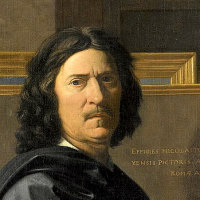 |
Nicolas Poussin, 1594–1665. French painter, largely active in Rome.
One of the preeminent French painters of his century, and its outstanding classicist, his work includes historical, religious, and mythological subjects, some focusing on the figures in the manner of Raphael, other set in classical landscapes similar to those of Claude Lorrain.
|
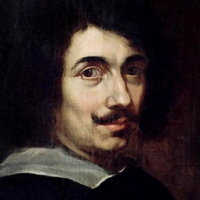 |
Claude Gellée (Claude Lorrain), 1604–82. French landscape painter, largely active in Rome.
His Arcadian and harbor scenes, principles of composition, and use of light earned him the reputation as the greatest of all landscape painters, and his influence especially in France, Britain, and America lasted until the mid-19th century, not only in art but also landscape gardening.
|
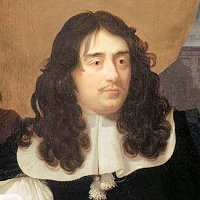 |
Louis Le Vau, 1612–70. French architect.
As principal architect to Louis XIV, Le Vau designed major additions to the palaces of Vincennes, the Louvre, and most notable Versailles. He is also noted for the moated chateau of Vaux-le-Vicomte and the Collège des Quatre Nations, now the Institut de France, across from the Louvre.
|
 |
André Le Nôtre, 1613–1700. French landscape architect.
Le Nôtre worked with Louis Le Vau at Vaux-le-Vicomte and was engaged by Louis XIV to achieve similar marvels of garden design on an even larger scale at Versailles. A pioneer in the field, his work was emulated at other great houses around Europe.
|
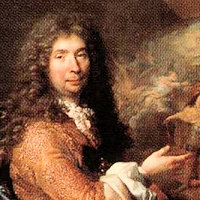 |
Charles Le Brun, 1619–90. French painter and sculptor.
One of the geniuses behind Versailles, his Bassin de Apollon fountain shows Apollo (as Louis XIV) drawing the chariot of the Sun out of the waters.
|
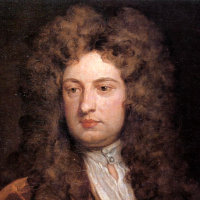 |
Sir John Vanbrugh, 1664–1726. English architect and playwright.
A radical in thought and politics, he wrote two outspoken Restoration plays, The Relapse and The Provoked Wife, that were shocking in their explicitness and defence of women's rights. His later career as an architect was equally radical, creating the short-lived style of English Baroque in buildings such as Blenheim Palace and Castle Howard. He was imprisoned as a spy in France, 1688–92.
|
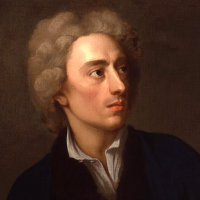 |
Alexander Pope, 1688–1744. English poet.
Pope is considered the leading English poet of the Augustan era, "known for his satirical and discursive poetry including The Rape of the Lock, The Dunciad, and An Essay on Criticism, and for his translations of Homer" [Wikipedia]. He suffered all his life from a form of tuberculosis that twisted his spine, stunted his growth, and affected his eyesight.
|
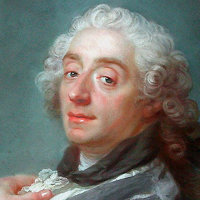 |
François Boucher, 1703–70. French painter.
His many works, which virtually define the French rococo style, include several elegantly erotic treatments of mythological subjects, such as his Jupiter and Callisto, but also genre scenes, erotica, and even landscapes.
|
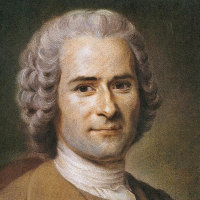 |
Jean-Jacques Rousseau, 1712–78. French-Swiss philosopher, writer, and composer.
A leading figure in Enlightenment thought, he advocated the values of natural simplicity in his later work, heralding the transition to the sensibility and subjectivity of the Romantics. His work as a composer culminated in the opea Le devin du village ("The Village Soothsayer") in 1752, after which he stopped working in the theatre.
|
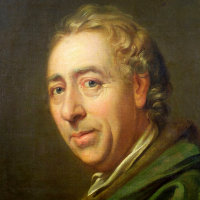 |
Capability Brown, 1716–83. English landscape architect.
More than any other, Lancelot "Capability" Brown is associated with the natural landscape movement that transformed the design of gardens and parks in 18th-century England, and rapidly spread abroad. He was appointed Head Gardener at Stowe at the age of 26, and soon developed a practice that took him to Blenheim, Chatsworth, Harewood, and Kew, among many other estates. He also designed the houses in several of his parks. His nickname comes from his practice of assessing the "capabilities" of a site before accepting a commission.
|
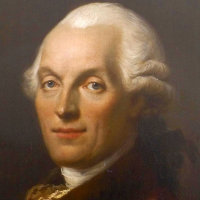 |
Richard Mique, 1728–94. French architect.
Mique was a relatively conventional architect in the neo-classical style, but he is best remembered for the rustic hameau he created for Marie Antoinette in the grounds of Versailles. Unfortunately his devotion to the Queen led to his execution in the last days of the Reign of Terror.
|
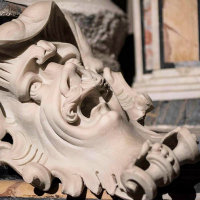 |
Paolo Persico, 1729–1796. Italian sculptor.
Persico is best known as the leading collaborator on the sculpture groups of Venus and Adonis and Diana and Actaeon at the Palace of Caserta. The image is obviously by Persico, not of him!
|
 |
John Constable, 1776–1837. English painter.
Even more than his contemporary Turner, Constable was the leading English landscape painter of the 19th century. Living in East Anglia, he was influenced by the Dutch landscapists painting very similar country. He made numerous outdoor sketches of clouds and trees, with free and brilliant handling of paint, but reverted to a more sober style in his paintings for exhibition.
|
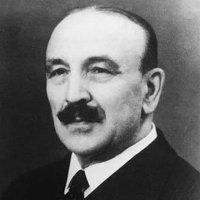 |
Achille Duchêne, 1866–1947. French landscape architect.
"Duchêne was a French garden designer who worked in the grand manner established by André Le Nôtre, [making him the] designer most in demand among high French society at the turn of the 20th century. [His practice] was responsible for some six thousand gardens in France and worldwide." [Wikipedia]
|






























































